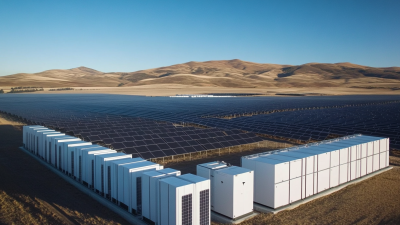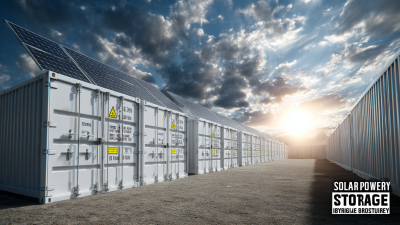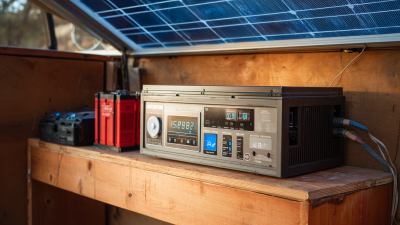In recent years, the burgeoning interest in renewable energy has propelled many homeowners to consider solar storage batteries as a viable option for energy independence and efficiency. However, calculating the true cost of solar storage batteries can be complex, involving not just the initial purchase price but also installation expenses, maintenance, and potential savings on energy bills.

According to industry reports, the average solar storage battery cost ranges from $5,000 to $15,000, depending on capacity and technology. Moreover, studies indicate that homeowners can save between $500 to $1,000 annually on energy costs, significantly impacting the return on investment over time.
This blog will delve into the factors that contribute to the overall cost of solar storage batteries and provide insights on how to assess their long-term economic benefits for your home.
When considering the initial investment for solar storage batteries, homeowners must analyze several factors that contribute to the overall cost. According to the U.S. Department of Energy, the price of lithium-ion batteries has dropped by nearly 90% over the past decade, currently averaging around $400 to $750 per kilowatt-hour (kWh) of storage capacity. This significant decrease makes solar storage systems more accessible to homeowners, but it’s essential to account for installation costs, which can add an additional 10-20% to the total expense.
While the initial costs may seem daunting, it’s worth exploring financing options that can alleviate the burden. Many state and federal incentives exist to encourage the use of solar energy, including tax credits that can cover up to 26% of the installation costs. Additionally, utility companies may offer rebates or performance-based incentives, making this investment more financially viable.
Tip: Before diving in, assess your electricity usage and storage needs to determine the appropriate size of your battery system. This can help avoid overspending on unnecessary capacity. Another tip is to seek quotes from multiple installers to find the best rates, ensuring you not only stay within budget but also select a reliable provider.
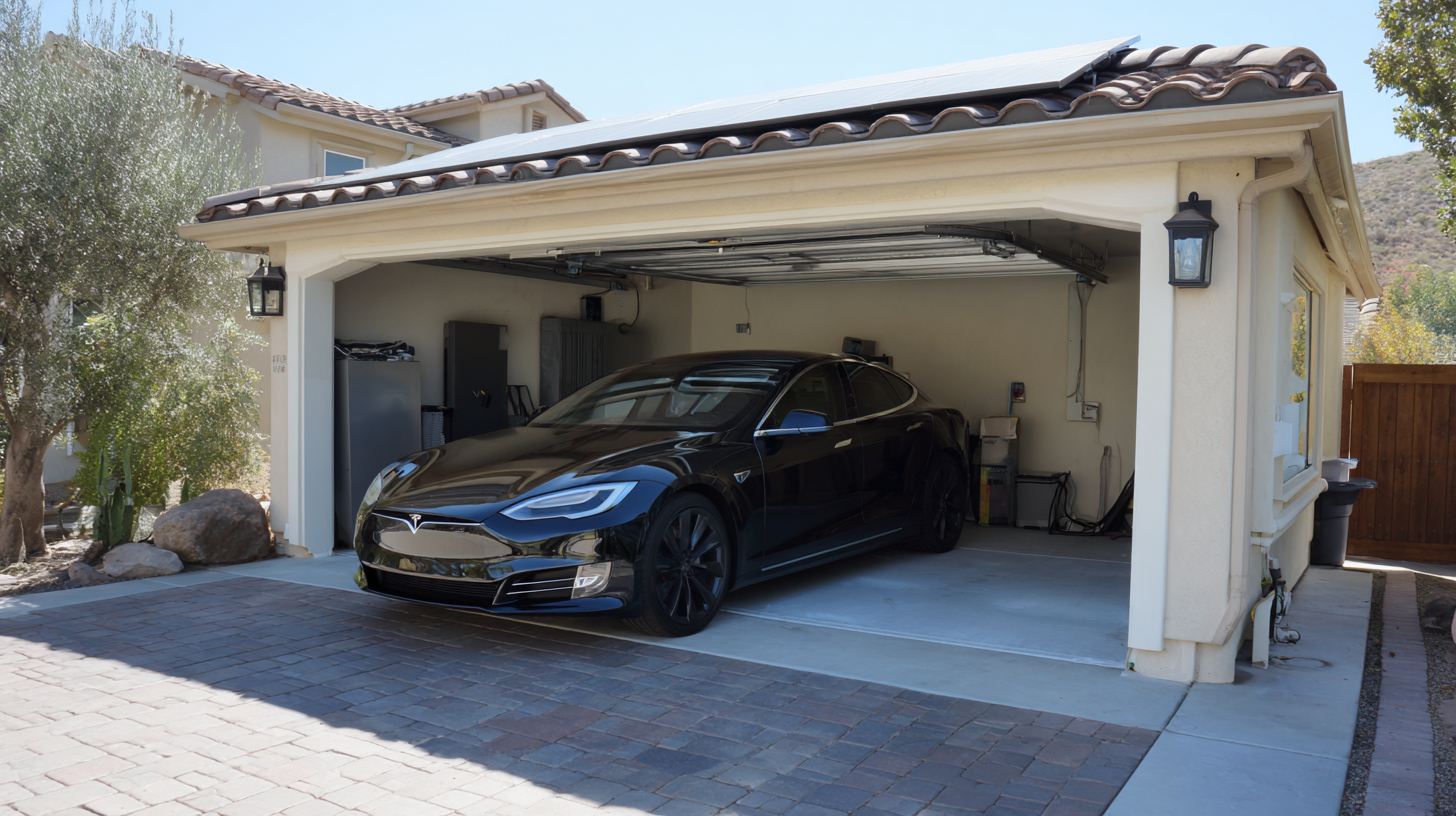
When considering the installation of solar storage batteries for your home, it's essential to evaluate their long-term savings and how they can influence your energy bills. Home battery systems can not only provide backup power but also mitigate electricity costs by storing energy produced during off-peak hours or by your solar panels. Recent research has highlighted the performance losses that photovoltaic systems can experience due to environmental factors, which can lead to an increased necessity for efficient storage solutions.
**Tips for Maximizing Savings:**
1. **Assess Your Energy Needs:** Before investing in a battery system, analyze your energy consumption patterns to determine the right size and capacity for your home.
2. **Explore Tax Credits:** Installing solar and battery systems before tax credits expire can significantly reduce upfront costs, maximizing your savings in the long run.
3. **Consider Hybrid Systems:** Combining solar batteries with other renewable energy sources, like wind, may provide enhanced reliability and further reduce energy bills while promoting sustainability.
By carefully evaluating these aspects, homeowners can optimize the financial advantages of solar storage batteries while contributing to a more sustainable energy future.
When considering solar storage batteries for your home, several factors significantly influence their lifespan and replacement costs. One of the primary factors is the battery chemistry. Lithium-ion batteries, for instance, are known for their longer lifespan compared to traditional lead-acid batteries. While they may have a higher upfront cost, their durability and efficiency often lead to lower overall expenses over time. Understanding the different types of batteries available can help homeowners make informed decisions that align with their energy needs and budget.
Another crucial aspect is the depth of discharge (DoD) and charging cycles. Batteries that are regularly discharged to a lower level tend to degrade faster, reducing their effective lifespan. It’s essential to choose a battery system that can handle the usage patterns of your home while maximizing its lifespan. Additionally, factors such as temperature extremes and maintenance practices play a role in determining how long your battery will last and how much replacement will cost. Investing in quality batteries and monitoring their performance can lead to significant savings, ultimately making solar energy a more viable and sustainable option for homeowners.
When considering solar storage systems for your home, it's crucial to factor in not just the initial installation costs but also the ongoing maintenance and insurance expenses. Recent analyses highlight that the development of Battery Energy Storage Systems (BESS) is becoming increasingly significant in U.S. energy markets, demonstrating a clear trend toward renewable energy penetration in electricity grids. With the dramatic reductions in costs associated with solar technologies, it’s essential for homeowners to stay informed about additional financial aspects, including maintenance which is projected to average around 1-2% of the initial investment annually.
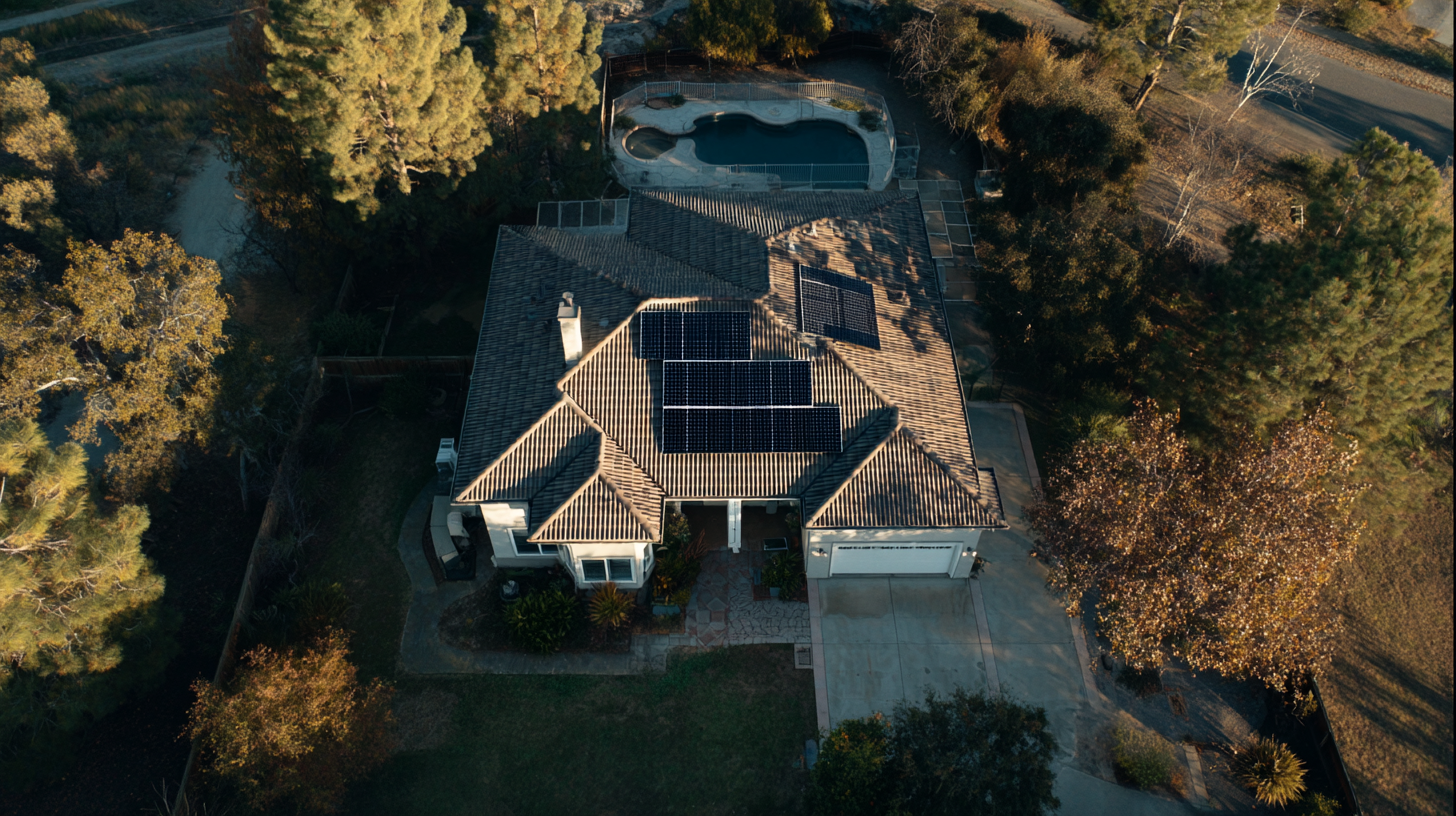
Additionally, the insurance implications of owning a solar storage system cannot be overlooked. As these storage systems become more common, insurance providers are adapting their policies, which can vary widely. Homeowners may face increased premiums due to potential risks associated with battery systems, such as fire hazards. Understanding these costs is vital, as insurance rates can differ based on the installed capacity and specific technologies used. Keeping track of these financial elements plays a pivotal role in accurately calculating the total cost of ownership for solar storage systems, ultimately influencing the decision to invest in sustainable energy solutions.
As homeowners increasingly consider solar battery storage systems, understanding the financial implications, including tax incentives and rebates, is crucial. Currently, the federal solar tax credit offers a substantial opportunity for savings, allowing homeowners to claim up to 26% of their solar installation costs. However, this incentive is set to expire after December 31, 2025, which adds urgency for those contemplating an investment in solar energy solutions. According to industry reports, typical installation costs for solar panels and battery systems can exceed $28,000, making these tax credits a significant financial motivator for prospective buyers.
With a shift in the political landscape, proposed changes by the current administration could impact the availability of these much-needed incentives. Reports indicate that the new legislation aims to roll back tax credits for solar panels and electric vehicles, potentially affecting financing for clean energy projects. Homeowners must act quickly to secure these benefits. Additionally, some states continue to offer localized rebates and incentives that can further reduce upfront costs. For example, in certain regions, residents may find additional subsidies that combine with federal credits, increasing overall savings on solar battery installations. As clean energy tax credits loom under threat, now is a critical moment for homeowners to align their investments in solar storage with available financial incentives.
| Battery Type | Average Cost ($) | Capacity (kWh) | Incentives ($) | Net Cost after Incentives ($) |
|---|---|---|---|---|
| Lithium Iron Phosphate | 7,000 | 10 | 1,500 | 5,500 |
| Lead Acid | 4,500 | 7 | 900 | 3,600 |
| Nickel Manganese Cobalt | 8,500 | 12 | 1,800 | 6,700 |
| Solid State | 12,000 | 15 | 2,400 | 9,600 |

